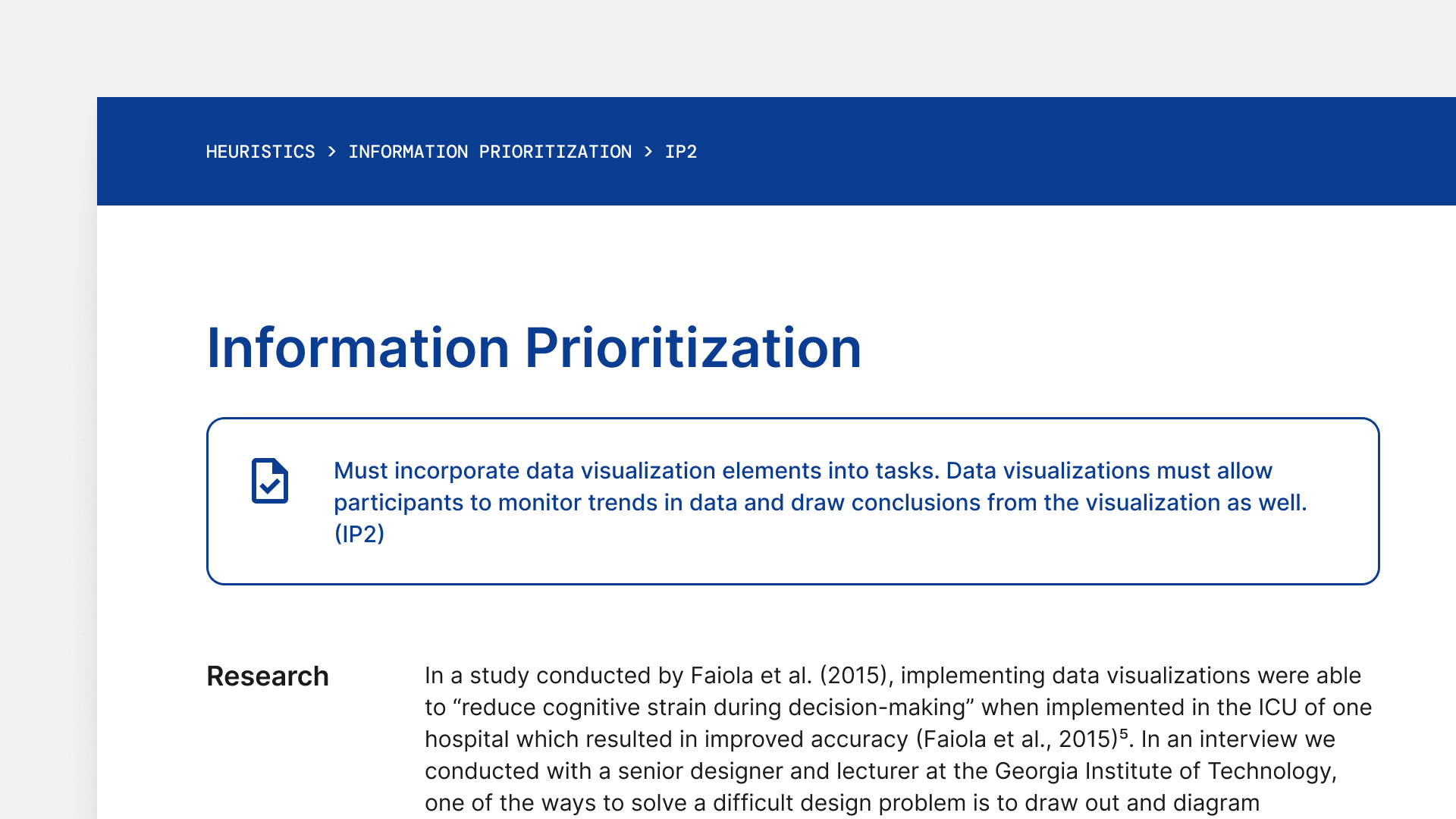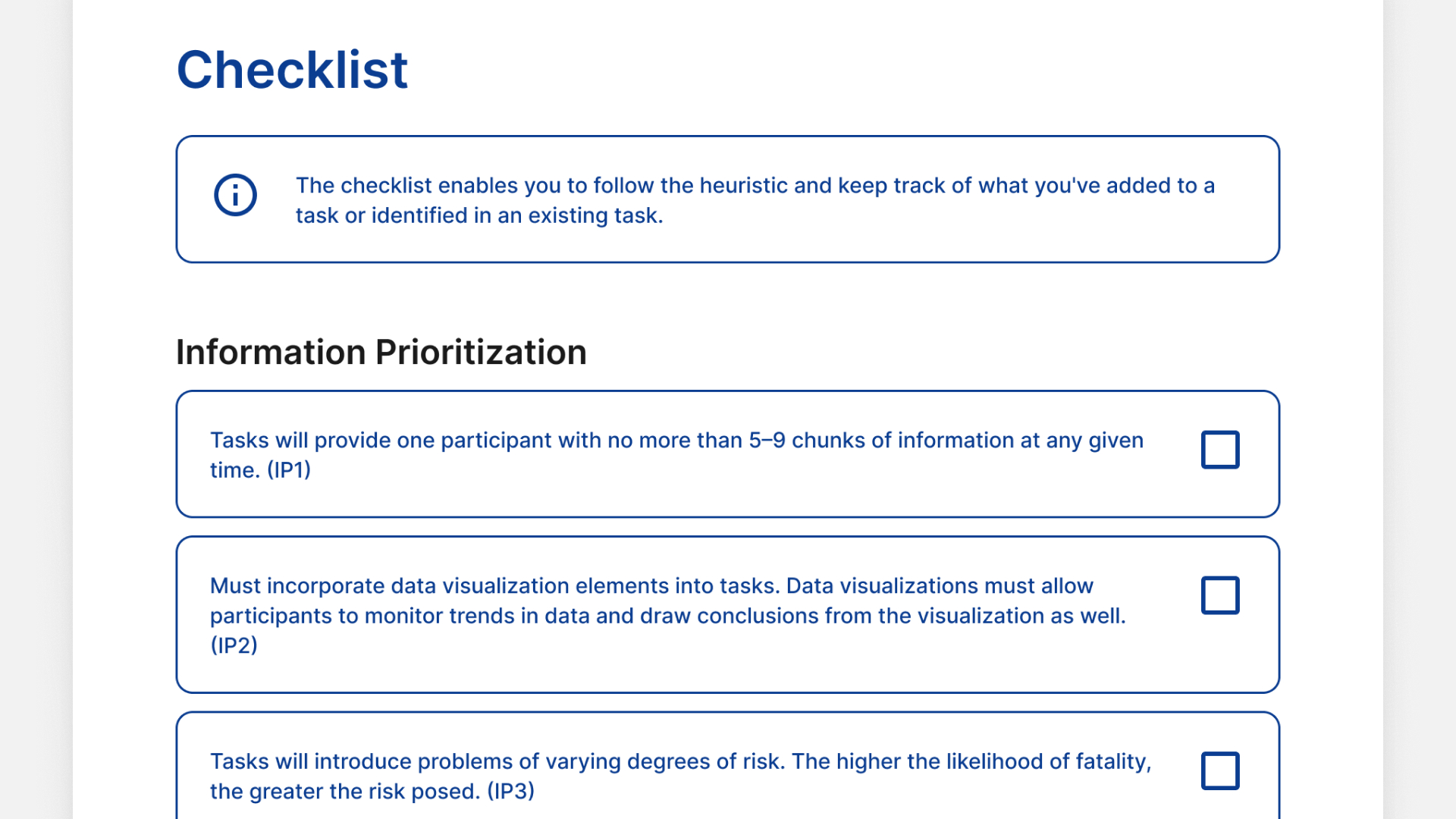Findings
After testing with NASA experts in anomaly scenarios, here are a list of findings that we discovered and implemented in our prototypes.
① The manual should be able to be read and comprehended by a variety of different stakeholders in NASA.
HRP researchers are not going to be the only ones who may have interest in M.A.S.T. For instance, flight controllers and astronauts (who have dealt first-hand with time-critical anomalies) may want to ensure that tasks created accurately simulate the challenges associated with anomalies.
—Former flight controller, NASA JSC
Based on this, we decided to incorporate direct examples of how each of the two tasks we created (presented in further section) follow the manual's guidelines. By doing this, more audiences can understand how the guidelines should be utilized in task design and may be able to provide more efficient feedback during early prototyping phases.
② There should be an option for customization in the way that the guide is applied.
Across different contexts, the guide may have the potential to be applied in a different manner.
—HRP Researcher, NASA Ames
As a result, it is important to keep the guidelines broad, serving more as a “rule of thumb” than needing to be strictly adhered to.
For instance, one of our guidelines discusses incorporating data visualizations within tasks.

The guideline in M.A.S.T.
However, it does not specify exactly what type or how many data visualizations may be incorporated. This is to leave to the discretion of the researcher; if the researcher puts more emphasis on a highly contextual environment, many data visualizations can be implemented within the task to mimic spacecraft displays. Keeping the guidelines broad allows researchers some independence in the way the guidelines are applied depending on what they are trying to assess.
③ Researchers should easily and effectively be able to tell whether a guideline is being applied.

The checklist at the end in M.A.S.T.
—HRP Researcher, NASA Ames
We wanted to ensure that the manual was presented in a way so that researchers with very little time could easily adopt our guidelines. In other words, we wanted it to be possible for researchers to iterate quickly using our manual, perhaps creating many task prototypes before conducting further research to know what they want to test. In order to do this, we created a checklist at the end of our manual to go about this design process quickly.